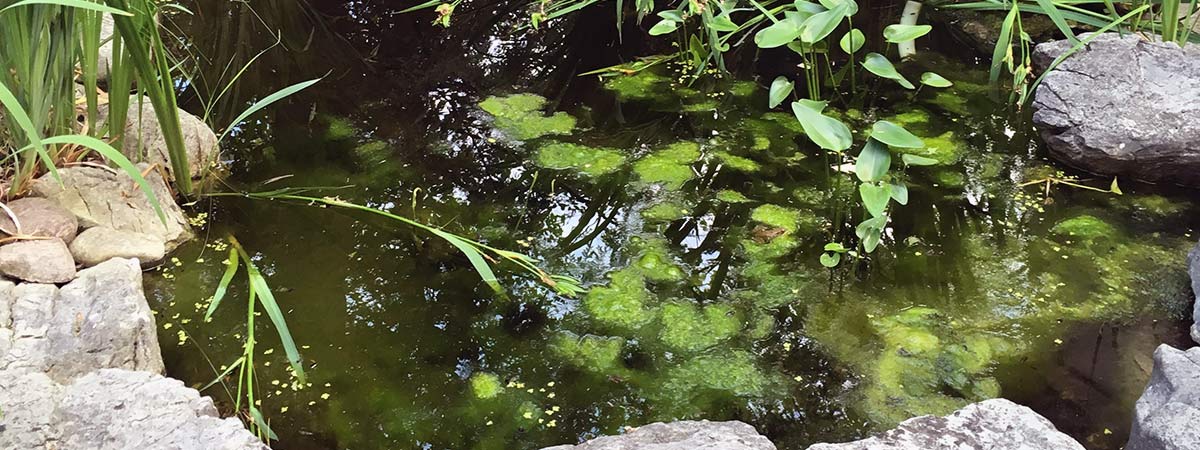
Algae is present in every pond, which isn’t a bad thing. In fact a moderate amount algae is beneficial for the overall balance of a pond. Algae becomes a problem when it grows out of control. Planctonic or free-floating can turn a pond murky and green, making difficult to see your fish. String algae or blanketweed is even more of a nuisance because it can smother pond plants, and even clog pumps and filters, possibly causing damage. New ponds and even established ponds during the spring often provide ideal conditions for excessive algae growth.
There are 2 main types of algae that are common in ponds:
Algae is present in every pond, it occurs naturally and is part of a healthy ecosystem. Only when the pond becomes unbalanced, does it become a problem.
Barley Straw Pellets or Barley Extract can be used to naturally control algae in the pond. Add it early in the spring because it takes a few weeks to begin to work. Sometimes string algae can get out of control very early in the spring or suddenly during very hot spells of weather. Sometimes you want to get a handle on it quickly so when all else fails, Pond Balance, a product from Interpet, works wonderfully. It is not an algaecide, so it won’t harm any other plants (or even free floating algae for that matter), it works specifically on string algae. Add it in the spring and periodically through the summer. A few weeks after the initial treatments, the string algae will fall right off the rocks, liner or whatever it is growing on. Clarity Max Plus is another product that works in a similar manner in just a few treatments. ProFix a concentrated liquid algaecide, has become one of the most popular algae treatment because it works on both string algae and green water.
Suspended algae (pea soup green water) can sometimes also grow out of control no matter what you do. First see our article How To Clear Green Water page for more information about controlling suspended algae, If you don’t want to use chemical and you have tried everything else, then consider installing an Ultraviolet Clarifier.
For Your Waterfall:
Sometimes it’s just your waterfall that grows a lot of algae, and the rest of the pond looks good. In this case, you don’t need to treat the whole pond, instead there are products that you can use as a spot treatment that kill algae on contact.
Happy New Year! To you and your fish...
Fall is ‘prime time’ for visits from herons. Starting in late summer, herons begin to migrate south where they spend the winter. They often make stops along the way in koi and goldfish ponds where your brightly coloured fish are easy targets.